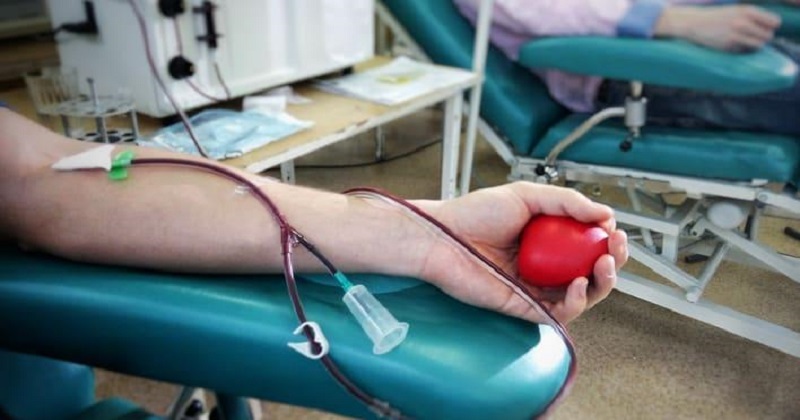
A new study revealed that regular blood donation can help lower the amounts of some hazardous synthetic chemical compounds known as ‘forever chemicals’ that stay in the body. PFAS, or ‘per- and poly-fluorinated alkyl compounds’ are chemicals present in everyday items such as non-stick cookware, stain- and water-resistant materials and paints, as well as carpets and clothing, and have been linked to a variety of health problems.
PFAS is also found in traditional firefighting foams, and studies have revealed that firefighters had greater PFAS levels in their blood than the general population. According to previous studies, these compounds nearly never disintegrate spontaneously, as their name implies.
They can irritate the lungs, producing asthma, and they are suspected of being carcinogenic. PFAS has also been related to decreased immunological response, obesity, liver function abnormalities, and a variety of other disorders.
‘They [firefighters] say ‘we don’t want these chemicals in our body, we don’t want to be guinea pigs to see what’s going to happen to us in 10, 20, 30 years. Let’s get them out’’, study co-author Mark Taylor said.
As per new research of nearly 300 Australian firefighters, regular blood and blood plasma donations can help clean these toxic substances out of the body. Scientists analysed 285 Fire Rescue Victoria workers and contractors who had excessive levels of perfluorooctane sulfonate (PFOS), a widely found kind of PFAS used in some firefighting foams, in the study, which was published last week in the journal JAMA Network Open.
The individuals had PFOS levels in their blood of at least 5 nanograms per millilitre (ng/mL), were eligible to donate blood and had not donated blood in the previous three months prior to the study.
Researchers from Macquarie University in Australia randomly allocated 95 volunteers to give plasma every six weeks, 95 to donate whole blood every 12 weeks, and the other 95 to be followed for 12 months as the control group. They looked at the participants’ PFAS levels at four points: when they were recruited, at the start of the experiment, after 12 months of following their treatment plan, and three months afterwards.
Also Read: Family focused on deep healing: Jada Pinkett Smith on Will slapping Chris at Oscars
The most beneficial strategy was plasma donation, which reduced mean serum PFOS levels by 2.9 ng/mL compared to 1.1 ng/mL with blood donation ‘a substantial difference’. ‘Plasma donation was most effective, resulting in a roughly 30 per cent decrease in average blood serum PFAS concentrations over the 12-month trial period’, researchers said.
The decrease in harmful chemical levels was likely due to PFAS being attached to proteins present largely in the blood/ ‘This study provides the first avenue for affected individuals to remove PFAS from their bodies and redress the effects of their PFAS exposure’, scientists noted.
Researchers indicated that plasma donation was likely more beneficial than blood donation since firemen in the former group donated blood every six weeks while those in the latter group donated every 12 weeks. ‘Plasma PFAS concentrations are also about two times higher than blood PFAS concentrations, which could make plasma donation more efficient at reducing the body burden of PFAS chemicals’, they added.
However, experts said that more study is needed to discover the appropriate frequency and amount of donations for decreasing PFAS, balancing the therapeutic efficacy with the hurdles to frequent donations’.

Post Your Comments